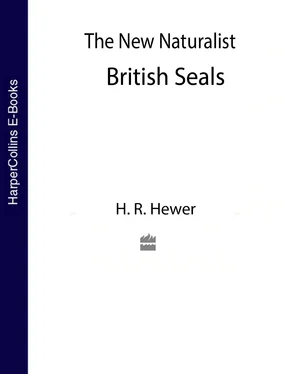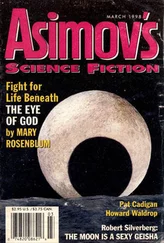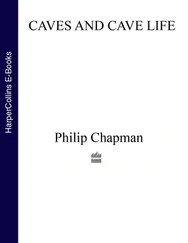ORKNEY AND SHETLAND GROUP
Until about ten years ago virtually nothing was known about the seal population in this area. Darling writing in 1947 said that ‘this seal occurs in Orkney and Shetland in relatively small numbers’. We know now that this is very far from the truth and that a population of 8,000 or more are based on these two groups of islands. They have, since 1960, been subjected to a great deal of research. All the main and most of the minor rookeries are known and several moulting sites and other types of haul-out places have been identified. The task has not been made easier because common seals are also present in the area so that records and reports are often not clear as to which species is referred to.
The types of rookeries are rather variable. Perhaps this is because, being an archipelago, the Atlantic swell, already somewhat broken by the north coast of Scotland particularly in Orkney, is not an overwhelming factor. In South Ronaldsay, for example, wide and deep beaches are used as rookeries much as the narrower ones of Pembrokeshire are. The bulls however are stationed on the beaches and not offshore. Elsewhere, such as on the Greenholms, the rookeries, beginning on the rocky foreshore ( Pl. 5) stretch inland on the grassland in a very Hebridean manner. Perhaps here more than anywhere else one is driven to concede that the grey seal is extremely adaptable and much of an opportunist.
About half the annual pup production was accounted for in the Muckle and Little Greenholms (1,100–1,500). *Several other islands in this central area of the archipelago, such as Wart Holm, Rusk Holm, Holm of Fara, Fara, Holms of Spurness, Little Linga and Gairsay provide another total of about 1,000. North Ronaldsay probably has only about 100 pups a year, but south of Mainland on South Ronaldsay, Swona and Little Skerry (in the Pentlands) another 250–300 are born. The research work and a local intensification of sealing has recently reduced the population a little and disturbance in one breeding season has been reflected by a change of site or a redistribution of numbers in the next.
Many other skerries, such as Auskerry, Taing Skerry, Wyre Skerry, Eynhallow, Boray Holm, Holm of Birsay, Damsay, the Barrel of Butter and others are used as haul-out sites during the non-breeding period, some of the breeding islands such as Rusk Holm, Holms of Spurness and Little Greenholm are also used in the early months of the year. It is, however, very noticeable that non-breeding haul-outs are never seen on the major breeding rookeries. This differentiation of site use is particularly well shown on Rusk Holm where the two southern skerries are used as reservoir haul-outs during the breeding season, the rookery is on the eastern pebble beach and north-eastern rocks, while the moulting haul-outs are either on the north-western rocks or on the south or south-eastern rocks according to wind and tide.
The numbers in Shetland are much fewer. This must be attributed as much to the rock-bound nature of the coast-line as to the scarcity of small uninhabited islands. In the southern part Lady Holm, Horse Holm and the geos or narrow beaches under Fitful Head provide small rookeries. Only in the north does the lie of the islands provide any lee so that small rookeries are found around Yell and Fetlar. The beaches under Ronas Hill are important breeding sites. In total there are probably only 200–300 pups each year.
In the non-breeding season the major haul-outs in the south and west are on Horse Holm, Lady Holm, around Fitful Head and on the Ve Skerries, west of Papa Stour. Small though these last are they sometimes hold up to 2,000 seals not all of which can be considered as Shetland grey seals in the sense that in the breeding season they will be found on the Shetland rookeries. Fair Isle, halfway between Orkney and Shetland, also has haul-outs and as a number of young seals marked in Orkney have been found in Shetland there is little doubt that the adults move freely between the two groups of islands. The picture here too is somewhat complicated by the presence of common seals and there is no doubt that much more is to be learnt about their distribution here, particularly in the northern islands.
In Orkney and Shetland there has persisted a tradition of sealing which has never been so strong in the Hebrides, possibly by reason of the Norse connections. The grey seal population here, therefore, appears to be fairly stable, fluctuating largely as a result of variations in sealing effort dependent, in turn, on the market price of seal-skins.
NORTH SEA GROUP
There is little difficulty in deciding that the centre of this group is the Farne Islands ( Pl. 5). The North Sea is peculiarly free of islands and it may as well be stated straight away that only on the Island of May in the Firth of Forth and on Scroby Sands off Great Yarmouth are there any breeding rookeries other than on the Outer Farnes. Elsewhere there is evidence of their fishing inshore along the east as far south as the Wash, and the coast of Holland, and as far north as the Moray Firth. Fishing haul-outs have been recorded from the Abertay Sands to the Wash, but there is always a haul-out on the outermost islands of the Outer Farnes. At certain times of the year, notably the spring, they consist of very large numbers indeed. The population has been rising steadily in recent years. Annual counts of pup production have been made with considerable accuracy over the past fifteen years or so and an annual increase of about 7% has been calculated. Undoubtedly at the turn of the century the population was at a very low ebb. The islands at present involved as rookeries are the North and South Walmses, Staple and Brownsman, but in the more distant past others were used as rookery sites such as the Wide Opens and other islands of the Inner Farnes. At times of the year, other than the breeding, haul-outs are found on the Longstone and Longstone End, the Harcars and on other skerries of the Outer Farnes. All of these islands are low with at least one or two shelving rock beaches so that access is easy and sheltered within the archipelago. The interiors of the islands are used as well as the ‘beaches’ for rookery sites, but usually only after the more shoreward zones have become congested.
At the time of writing the number of pups produced annually had reached 2,011 (1971) making the Farne Islands group the third largest known in the British Isles with an estimated total population of almost 6,500–7,000.
Before going into the details of the life history of the grey seal, it is necessary to give a brief description of the yearly cycle of both adult males and females. Until recently it was really quite unknown. Even worse, statements appeared in the literature which cannot have been founded on observation because they were so wildly wrong. Until the early 1950’s this species had only been studied during the breeding season. It is not difficult to find the reasons for this. During the late autumn and winter months the weather makes visits to the islands a very chancy affair and few people feel inclined to camp on these isolated spots during this time of year. Yet these are the only ways in which information can be gathered. During the summer months the weather is generally good but on the other hand very few seals will be seen. For the spring however, there is no excuse and it is a very important season indeed. Dr K. M. Backhouse and myself started visiting the Ramsey Island sites in 1952 and soon every month except December and July had been covered. Later all months in Orkney had been covered by Mr E. A. Smith and in the Farnes by Dr J. C. Coulson and Mrs Hickling. The work of Craggs and Ellison throughout the year on West Hoyle Bank has already been referred to. (Oddly enough it was undertaken quite independently of the other work in Pembrokeshire, Orkney and Farnes on which there was considerable interchange of knowledge and information. An example of this interchange will be given below when dealing with the annual moult.)
Читать дальше












